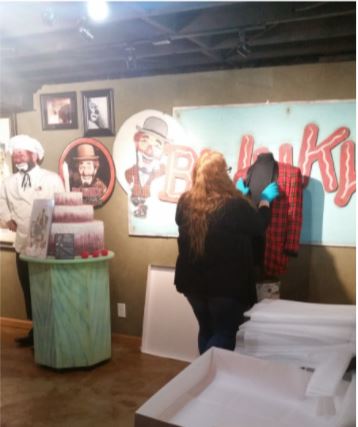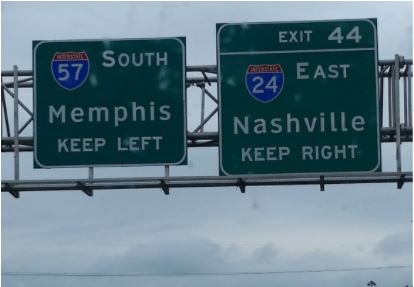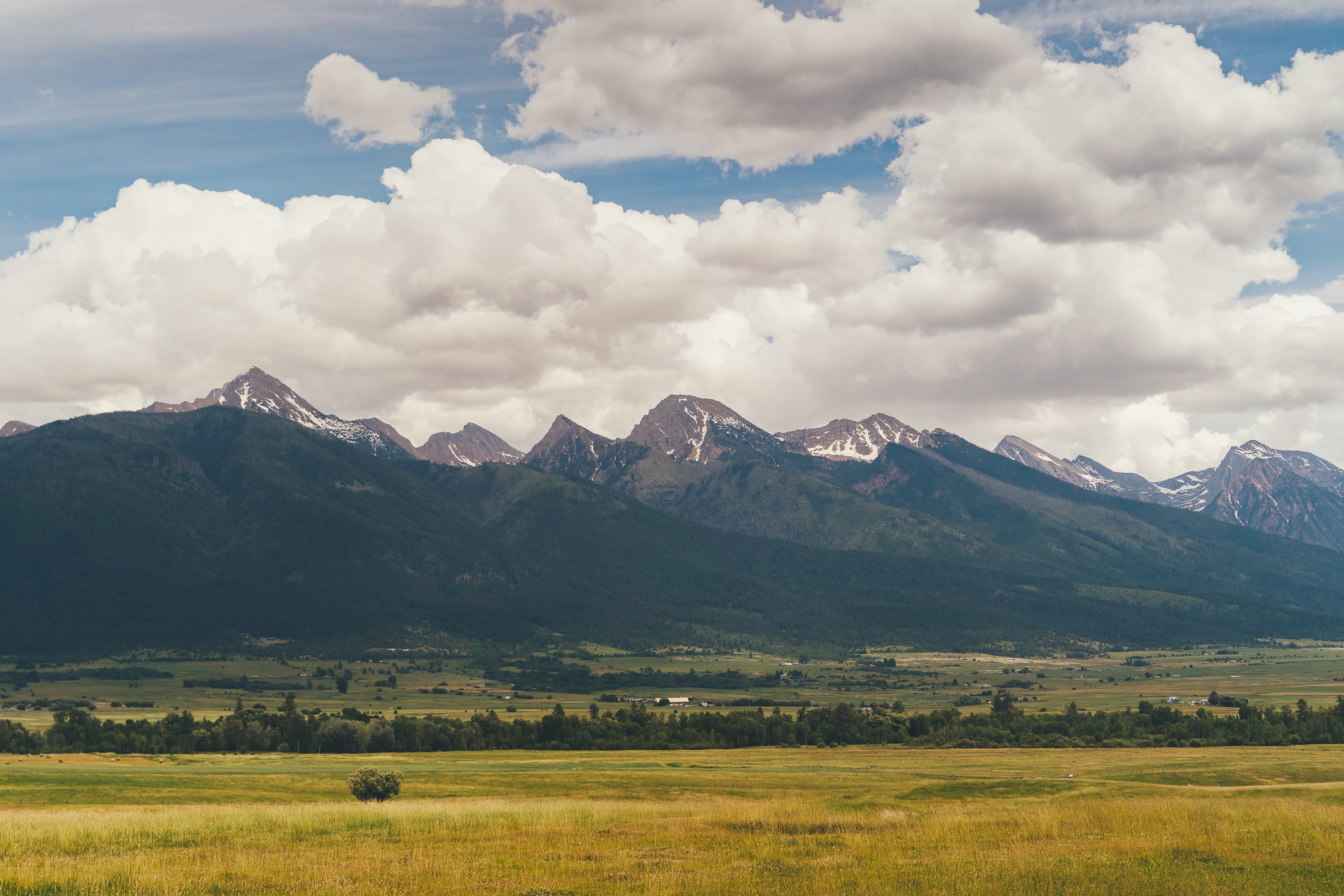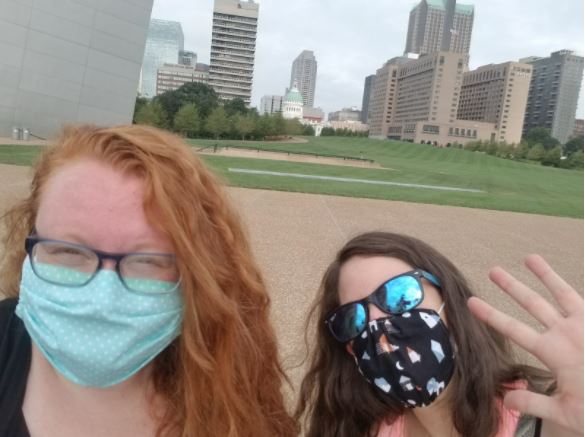
Story
Bringing Back Blinky
Museum Collecting in the Time of COVID-19
Imagine the year is [fill in the blank between 1958 and 1998], and today is your seventh birthday. You are sitting in your living room in Denver waiting for one of Colorado’s greatest institutions to grace your television screen. Your face lights up in anticipation, hoping to see Blinky the Clown say your name before he starts to sing his signature “Happy Birfday to You” song. Maybe if you are especially lucky this year, you find yourself in the KWGN Denver studios, crowded on bleachers with other children watching in awe, as Colorado’s favorite clown performs just feet away on the Blinky’s Fun Club set.
Blinky the Clown's "Happy Birfday" Song
If you were a kid in Colorado during the latter half of the twentieth century, chances are this scene sounds pretty familiar to you. After all, Blinky the Clown brought joy, comfort and unforgettable safety tips to generations of Colorado children every weekday for more than forty years. In fact, Blinky’s four-plus decades on Denver’s airwaves set national records: He became the longest running television clown and host of any children’s television show in American history.
Originally inspired by the circus as a child, Russell Scott donned face paint and a plaid jacket and began his television career as Blinky on station KKTV in Colorado Springs in 1958, just six years after Colorado acquired its first television station. In 1966, Scott and Blinky’s Fun Club moved to KWGN-TV in Denver, where it would stay until the set lights were finally turned off for the last time in 1998. This year, more than two decades after Scott ended his historic on-camera run as Blinky, History Colorado added his iconic costume—plaid jacket, bowler hat, and pristine white gloves—to our collection.
“He manufactured a million smiles a day and he gave us such a gift of happiness during our childhoods as Coloradans,” explained Shannon Schrum, who made it possible for History Colorado to preserve this significant piece of Colorado’s television history. Schrum grew up in Colorado as a Blinky the Clown super fan, and in his adulthood became a personal friend to Scott for twenty years. “Later in Blinky’s life, I got in contact with him and we ended up becoming the best of friends,” Schrum explained. “Every time I would go to Denver we would always get together.”

Shannon stands alongside his Blinky the Clown collection, including a life-sized model of Blinky that he created
Originally from Montrose, Schrum was one of those lucky kids who got to be on Blinky’s Fun Club when he was no more than eleven years old. As an adult, he credits Scott and this early on-air thrill for his love of show business. He was so inspired by Scott that he went into the entertainment business himself as a successful ventriloquist and prop fabricator. Over the years, Schrum has opened for country music stars at the Grand Ole Opry in Nashville, where he currently resides and maintains a large archive of Blinky memorabilia. This is where we met up with Schrum and his wife, Paula, to discuss Blinky’s legacy and begin the process of transporting the legendary clown’s iconic wardrobe to History Colorado.
“With a career of forty years on television . . . the impact that he made with Coloradans during that time is just incredible, and, in fact, so incredible that even the mere sight of that plaid for people who grew up here, no matter where they are in the world, it makes you think of Blinky. I’ve even run into people in Germany that would say, ‘Oh, that’s Blinky!’” Schrum told us. He explained why he believes it is important that these items end up in History Colorado’s collection: “I think that when people see this, it’s going to bring an incredible amount of joy and . . . be an interesting experience because it will be one of those rare displays to where they were a part of it. You can see artifacts and you can read about them but it’s so far in the past but this, they lived part of this so I think it’s really going to be impactful for a lot of people.”
A Clown Car Courier Run
To add Blinky to History Colorado’s collection, we had to go get him.
The business of retrieving donation items for museum collections can be logistically complicated in the best of times. But bringing Blinky back to History Colorado this summer raised some new questions for our team. How do we pack, pick up, and transport items during a global pandemic? How do you prepare when a hurricane is in the forecast? What do you do when you’re driving through a remote stretch of Missouri and run into a tornado warning? How much caffeine can one consume while attempting to minimize stops at questionable gas stations during a twelve-hour drive?
In order to bring Blinky’s items (and us) safely back to Colorado, we took numerous precautions to minimize risks. But we still wanted to make this trip fun. We were on a mission for a clown, after all. Blinky would have wanted no less.
Courier work is common for museums, often used for exhibits or acquisitions. Safer than shipping, using a courier—or, better yet, couriering collections with museum staff—ensures the safety of the items while in transit before reaching the safety of museum collection spaces. In this case, it was a cost savings as well for us to courier the items ourselves rather than hire a company to transport them. Thanks to the generosity of donors who support our mission to preserve Colorado’s material past, we were able to use a source of funds that are restricted solely to collection acquisitions. And so, we made plans to head to Nashville in August—our more purposeful museum version of the road trip that so many Americans seemed to be taking this past summer.
We actually had the trip scheduled twice before we were able to go, but as they say, the third time’s the charm. The first scheduled trip got pushed back because we were optimistic at the time that things were going to improve much faster than they obviously did (this was pretty early on in the whole pandemic experience). The second time was cancelled because we were both potentially exposed to someone who also may have been potentially exposed (ends up the original potential source of the exposure was negative, thankfully). So ahead of the third scheduled trip, we were extra, extra careful leading up to departure—we did pick-up orders for groceries, stayed away from everyone outside our households, if we had to go to work we went on weekends or at odd hours, always masked up and stayed a safe distance from others—and so much hand washing!
Before we left, we constructed custom boxes based on the dimensions of the items. We loaded up acid free tissue paper and archival quality foam, supplies necessary for safe travel and storage, as well as packing blankets to make sure the boxes would not shift during transit. To ensure a good journey for the jacket, it needed to be laid out and have tissue padding inserted around the arms to prevent creases. We then packed tissue paper around the jacket and foam laid above and below, to secure and cushion it against the jiggles of the highway. We packed the gloves and hat in a similar fashion.
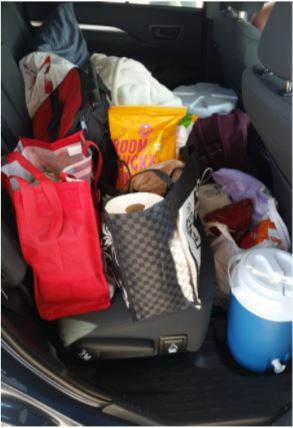
Food, water, and plenty of supplies fill the car, eliminating the need to stop
We rented the largest SUV available for this trip, as we knew we would need a lot of space for the objects as well as personal supplies. The jacket box alone took up almost the entire trunk of the Toyota Highlander, and along with the hat and gloves, Blinky monopolized the vehicle’s storage entirely—leaving only the back seats to hold our personal items as well as the three-days’-worth of food we had packed.
With COVID-19 becoming a major threat throughout the United States as we approached our departure date, safety was more important than ever. We carefully planned this trip. We purchased in advance all the food and water that we would need to minimize the need for stops. We made sure to bring multiple masks so we would have new ones each day, we carried hand sanitizer with us at all times, and brought gloves for when pumping gas. We selected a hotel that had a mandatory mask requirement in public spaces and ensured clean rooms.
In Colorado, Governor Jared Polis had implemented a mask mandate the previous month, but some of the states we were traveling through were still resisting such regulation. It was an eye-opening experience to travel during COVID, as each state—or in some cases different counties—chose to either abide by wearing masks or disagreed with mask mandates. At one stop for gas along a rural stretch of the route, the gas station had posted a large bright orange sign that read, “Masks are NOT REQUIRED here.” When we entered the gas station, we stuck out as the only customers wearing masks, a fact underscored by the stares we got from other patrons.
Arriving in Nashville, we drove through the kind of rain we rarely see in Colorado as Hurricane Laura soaked the area. We stopped for only a little more than an hour with the Schrums, our budget-consciousness preventing us from lingering in Nashville any longer than necessary, as we talked with them and packed up Blinky’s things.
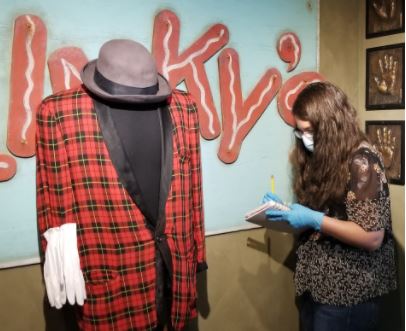
Kristin Chiesi completes a condition report, inspecting the item to note every detail about its original condition before it’s packed up
We turned back toward the west, leaving behind the rain as we headed back to drier climes, but the weather wasn’t done with us yet. We dodged a tornado warning by pulling off the highway in Williamsburg, Missouri, where we took cover in Crane’s Country Store, a nice store that welcomed us in while we waited out the storm. Thankfully, the tornado was south of us and heading east. After about an hour delay, we were able to continue heading west to Colorado.
When we got back we both quarantined at our respective homes for 14 days. Even though neither of us had any symptoms, as a precaution I went and got a COVID test about a week after our return just to make sure we weren’t exposed during our travels. The results were negative. It was a small price to pay for peace of mind.
In all, we travelled through the six states in forty hours of driving over three days—covering 2,379 miles to bring Blinky home. The iconic clown costume is now part of History Colorado’s collection and available to researchers and others who want to relive a moment of Colorado’s television history with Blinky’s Fun Club.
Gratitude
Special thanks to Shannon and Paula Schrum for the hospitality and generosity, and to Shannon for sharing his wealth of Blinky the Clown knowledge with us.
More from The Colorado Magazine
Trinidad’s Temple Aaron Looks to the Past to Secure Its Future In the spirit of renewal and perseverance, the people of southern Colorado and northern New Mexico have joined together to ensure a future for Trinidad’s Temple Aaron.
Colorado Is My Classroom More than a century ago, open-air classrooms had a moment in response to another pandemic. Then it was tuberculosis, another era-defining airborne pathogen that attacked the respiratory system. And the results were encouraging. Could fresh air be part of the solution to school in the time of coronavirus?
Pie It Is! Diet experts and Marxists warn against imbuing things and food with abstract emotions and values. Yet, the alchemy of pie makes it hard to deny that these homespun pastries embody love, family, and human connection.

